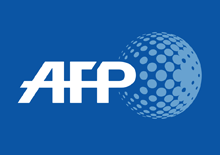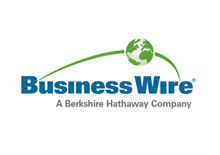Analysis on the $1.22Bn Croatian Defense Market (2019-2024): The Country's Current Need to Modernize Its Armed Forces Will Drive Defense Imports - ResearchAndMarkets.com
The "Croatian Defense Market - Attractiveness, Competitive Landscape and Forecasts to 2024" report has been added to ResearchAndMarkets.com's offering.
The report offers detailed analysis of the Croatian defense industry with market size forecasts covering the next five years. This report will also analyze factors that influence demand for the industry, key market trends, and challenges faced by industry participants.
Croatia's defense budget is expected to increase at a CAGR of 9.15%, primarily to counter terrorist threats and enhance defense capabilities. Croatia joined NATO in April 2009, becoming the second previously Yugoslav country to do so after Slovenia, which joined in 2004. Relations between the NATO countries and Russia have reached their lowest point since the end of the Cold War and the US is exerting pressure on its European allies to increase their defense budgets, an area where Croatia has been lagging behind.
All NATO partners had agreed to comply to contribute at least 2% of their GDP towards defense expenditure in 2014 with Croatia, who joined the NATO in 2009, allocating 1.5% of its GDP on defense in the 2019 budget. The country has emerged as an important contributor to regional stability and international security since joining NATO.
The country's participation in peacekeeping operations and counter terrorism also fueled Croatia's defense expenditure during the historic period. With this trend expected to continue over the forecast period, Croatia's defense expenditure is anticipated to register a CAGR of 9.15% to value US$1.22 billion in 2024. As a percentage of GDP, the country's defense expenditure is expected to average 1.7% over the forecast period, compared to the 1.3% recorded during the historic period.
Croatia's homeland security (HLS) expenditure, which recorded a CAGR of 7.07% during the historic period, increased from US$682 million in 2015 to US$896 million in 2019. The HLS budget will be invested into the procurement of surveillance and intelligence technologies, such as electronic identification documents, automated border crossing systems and CCTV (closed circuit television) systems. Croatian HLS expenditure is expected to grow at a CAGR of 3.41% over the forecast period, increasing from US$920 million in 2020 to US$1.05 billion by 2024.
During 2014-2018, the US emerged as the largest supplier of military hardware to Croatia, accounting for 63% of the country's defense imports, followed by Germany and Ukraine with respective shares of 30% and 7%. The US mainly supplied Croatia with aircraft, armored vehicles, artillery and missiles, a trend anticipated to continue over the forecast period due to the country's dependence on the US to meet its key defense requirements.
In particular, it provides an in-depth analysis of the following:
- The Croatian defense industry market size and drivers: detailed analysis of the Croatian defense industry during 2020-2024, including highlights of the demand drivers and growth stimulators for the industry. It also provides a snapshot of the country's expenditure and modernization patterns
- Budget allocation and key challenges: insights into procurement schedules formulated within the country and a breakdown of the defense budget with respect to capital expenditure and revenue expenditure. It also details the key challenges faced by defense market participants within the country
- Import and Export Dynamics: analysis of prevalent trends in the country's imports and exports over the last five years
- Market opportunities: list of the top ten defense investment opportunities over the next 5 years
- Competitive landscape and strategic insights: analysis of the competitive landscape of the Croatian defense industry
Companies Mentioned
- Elbit Systems
- Northrop Grumman Corporation
- Bell Helicopter
Key Topics Covered
1. Introduction
2. Executive Summary
3. Market Attractiveness and Emerging Opportunities
3.1. Current Market Scenario
3.1.1. Procurement Programs
3.1.2. Key Drivers and Challenges
3.2. Defense Market Size Historical and Forecast
3.2.1. Croatia's annual defense expenditure to reach US$1.22 billion by 2024
3.2.2. Modernization and acquisition of military equipment and counter-terrorism to drive Croatia's defense expenditure
3.2.3. The country's defense expenditure as a percentage of GDP is expected to average 1.72% over the forecast period
3.3. Analysis of Defense Budget Allocation
3.3.1. Capital expenditure's share of total expenditure to increase considerably over the forecast period
3.3.2. Capital expenditure budget is expected to increase over the forecast period
3.3.3. Per capita defense expenditure expected to increase over the forecast period
3.4. Homeland Security Market Size and Forecast
3.4.1. Croatia's homeland security budget is projected to increase at a CAGR of 3.41% over the forecast period
3.4.2. Organized crime forms the major component of homeland security expenditure
3.5. Benchmarking with Key Global Markets
3.5.1. Croatia's defense expenditure is expected to increase at a CAGR of 9.15% over the forecast period
3.5.2. Croatia's military expenditure is low compared to countries with the largest defense expenditure
3.5.3. Croatia allocates a low percentage of GDP to defense
3.6. Market Opportunities: Key Trends and Growth Stimulators
3.6.1. Top 10 Defense Market Sectors by Value (US$ Million) - Projections over 2019-2024
4. Defense Procurement Market Dynamics
4.1. Import Market Dynamics
4.1.1. The country's current need to modernize its armed forces will drive defense imports
4.1.2. The US was the leading supplier of arms to Croatia during the historic period; a trend that is expected to continue over the forecast period
4.1.3. Aircraft accounted for the majority of defense imports during 2010-2015
4.2. Export Market Dynamics
4.2.1. Croatia does not export a large volume of arms due to its under-developed domestic industry
5. Industry Dynamics
5.1. Market Regulation
5.1.1. Croatia has not disclosed any offset obligations
5.1.2. Regulations regarding foreign direct investment (FDI) in the defense sector have not been disclosed by the government
5.2. Market Entry Route
5.2.1. Budgeting process
5.2.2. Government-to-government agreements are the preferred market entry route for foreign OEMs
6. Competitive Landscape and Strategic Insights
6.1. Competitive Landscape Overview
6.1.1. Foreign suppliers manufacture defense systems overseas and deliver them to Croatia
6.1.2. Croatia Market Share Analysis, 2018
7. Business Environment and Country Risk
7.1. Economic Performance
7.1.1. GDP Per Capita
7.1.2. GDP, Current Prices
7.1.3. Exports of Goods and Services (LCU Million)
7.1.4. Imports of Goods and Services (LCU Billion)
7.1.5. Local Currency Unit per US$
7.1.6. Market Capitalization of Listed Companies (US$ Billion)
7.1.7. Market Capitalization of Listed Companies (% of GDP)
7.1.8. Goods Exports as a Percentage of GDP
7.1.9. Goods Imports as a Percentage of GDP
7.1.10. Services Imports as a Percentage of GDP
7.1.11. Service Exports as a Percentage of GDP
7.1.12. Foreign Direct Investment, net (BoP, current US$ Billion)
7.1.13. Net Foreign Direct Investment as a Percentage of GDP
7.1.14. Mining, Manufacturing, Utilities Output
For more information about this report visit https://www.researchandmarkets.com/r/heu56e
View source version on businesswire.com: https://www.businesswire.com/news/home/20190715005342/en/







